Home Safety Checklist For New Orleans
Keeping safe and secure in your residence should be your largest priority. But are you forgetting a few big safety items? Take this home safety checklist for New Orleans and discover where your living space requires greater attention.
This guide starts with some whole-home safety techniques, and then we break it down to specific room ideas. Then, contact (504) 291-4028 or complete the form below to get your home set up.
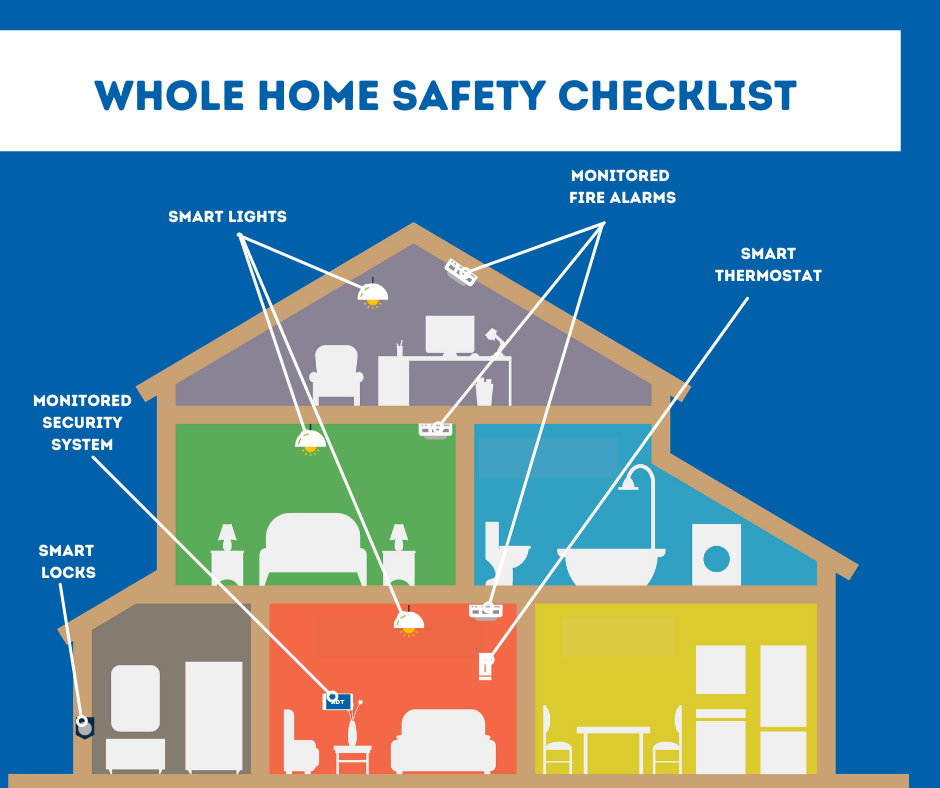
General Home Safety Checklist for New Orleans
While you should use a room-by-room method for home safety in New Orleans, there are some things that work for the whole-house approach. These components can talk together through a touchscreen hub, and often can work off other things. You can also control each of your home safety components through a mobile app, such as ADT Control:
-
Monitored Security System: Each one of your windows and doors should employ a sensor that warns you and your family to forced entry. As an alarm goes off, your monitoring team responds to the alert and immediately sends emergency personnel.
-
Smart Bulbs For Most Rooms: Of course, you can schedule your smart lights to become more eco-conscience. But smart lights can also allow you to stay safe throughout an emergency. Make your downstairs lights flip on when an alarm triggers to scare off intruders or brighten a path to a safe area.
-
Smart Thermostat: Likewise, a smart thermostat in New Orleans should save you up to 15% in energy spending. But it also can flip on an exhaust fan during a fire.
-
Monitored Fire Detectors: It’s code that you have a fire alarm on each level of your house. You can increase your fire readiness by installing a monitored fire detector that senses excessive heat and smoke, and alerts your 24/7 monitoring team when it thinks that there’s a fire.
-
Smart Door Locks: Every doorway that uses a keyed lock can use a smart lock. Now you can program numbered codes to friends and family and get texts to your mobile device when the locks are used. Your smart lock can even automatically open, allowing you to quickly get out during an emergency.
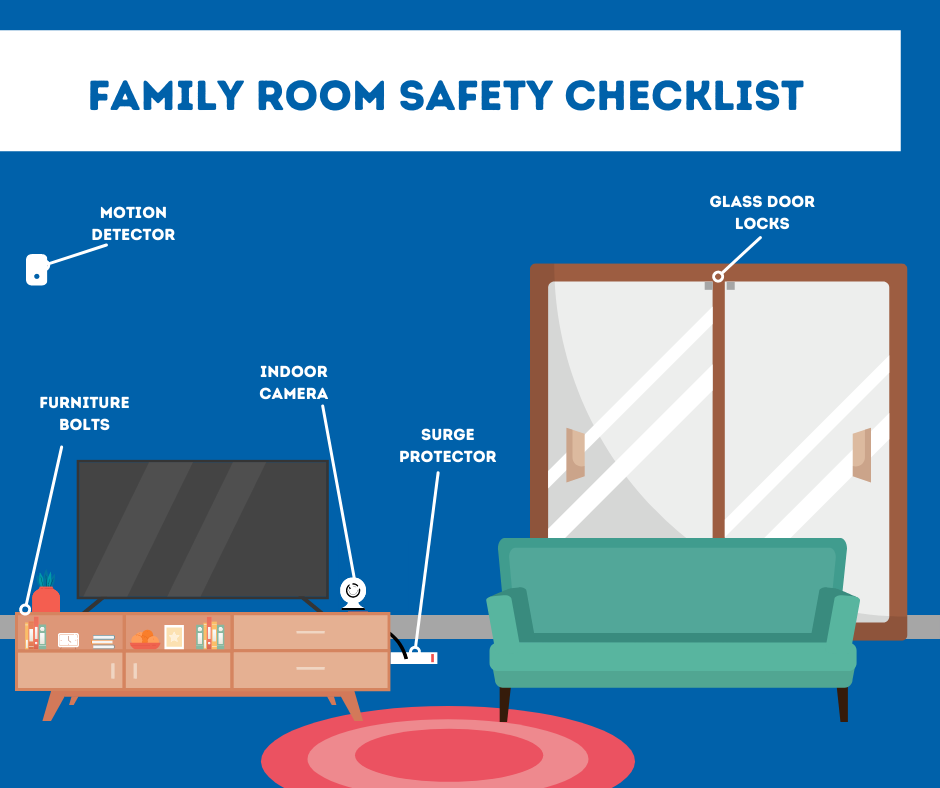
Family Room/Living Room Safety Checklist For New Orleans
You’ll spend most of your time in the family room, so it can be the best area to optimize your home safety. Electronics, like your TV or video games, usually reside in your living room, making it an alluring room for burglars. Begin with installing a motion sensor or indoor security camera by the doorway, then continue on with some of these suggestions:
-
Motion Sensors: By putting in motion detectors, you’ll have a high-decibel alarm whenever they sense suspicious motion within your family room. Look for motion detectors that filter out pets or you’ll see a tripped alarm every time your dog passes through for a bite of food.
-
Security Camera: An indoor security camera puts a constant watch on your family room. View real-time streams of everything so you can find out what’s happening through the mobile app. Or chat with your family in the room using the two-way talk feature.
-
Surge Protector/Cord Maintenance: Make sure you protect all your electronics and stop overloading your circuits with a surge protector. For added comfort, install a smart plug with a surge protector built-in.
-
Furniture Attached To The Wall: If you have curious kids, you’ll need to bolt your bookshelves and entertainment center to a wall. This is especially crucial if your living room has carpet that might make heavy objects extra wobbly.
-
Special Locks For Glass Doors: If your living room has a sliding glass door that leads to a backyard, deck, or outside porch, you probably can see that the latch is fairly worthless. Put in a custom lock, like a bottom bar or small locks that secures the door to the bottom and top of the opening.
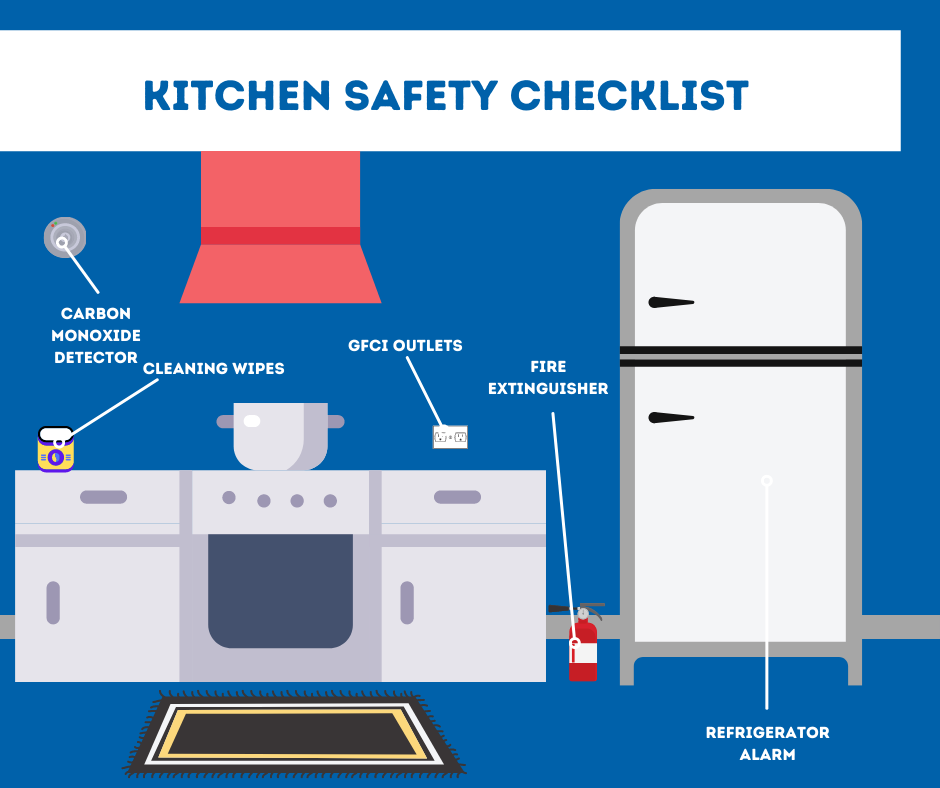
Kitchen Safety Checklist For New Orleans
Your kitchen has many items that should provide safety and security to your home. Some of these items should be simple to add and can be bought from the a retail store:
-
Fire Extinguisher: A fire can come from from an overfilled frying pan or a towel that’s too close to a burner. Always store a fire extinguisher at the ready for any cooking emergencies.
-
GFCI Box On Every Outlet: A circuit interrupter outlet should be used on outlets where they’re by water to prevent a deadly shock. That means the outlets close to your kitchen counter and sink. Since 1987, it’s been required to have one GFCI per circuit. But if you don’t want your whole kitchen to go dead when one outlet trips, you’ll want to install a separate GFCI per outlet.
-
Monitored Carbon Monoxide Detector: A carbon monoxide detector is needed in spaces that employ gas for the oven and stove. If your gas burners spring a leak, the carbon monoxide detector will emit a loud, buzzing sound and contact your monitoring center.
-
Cleaning Wipes Or Spray: The most overlooked safety problem in the kitchen is the viruses, bacteria, and contamination that comes with blood from meat and other foods. Always store cleaning wipes or spray to sanitize your area after cooking.
-
Refrigerator/Freezer Alarm: The milk, meat, and perishables in the fridge should stay at a chilly temperature to be healthy to use. If you accidently leave the freezer or refrigerator door ajar, then a constant beep will let you know so you can check the seal. Some appliances come with this installed, others won’t, and you’ll have to pick up a fridge alarm from online.
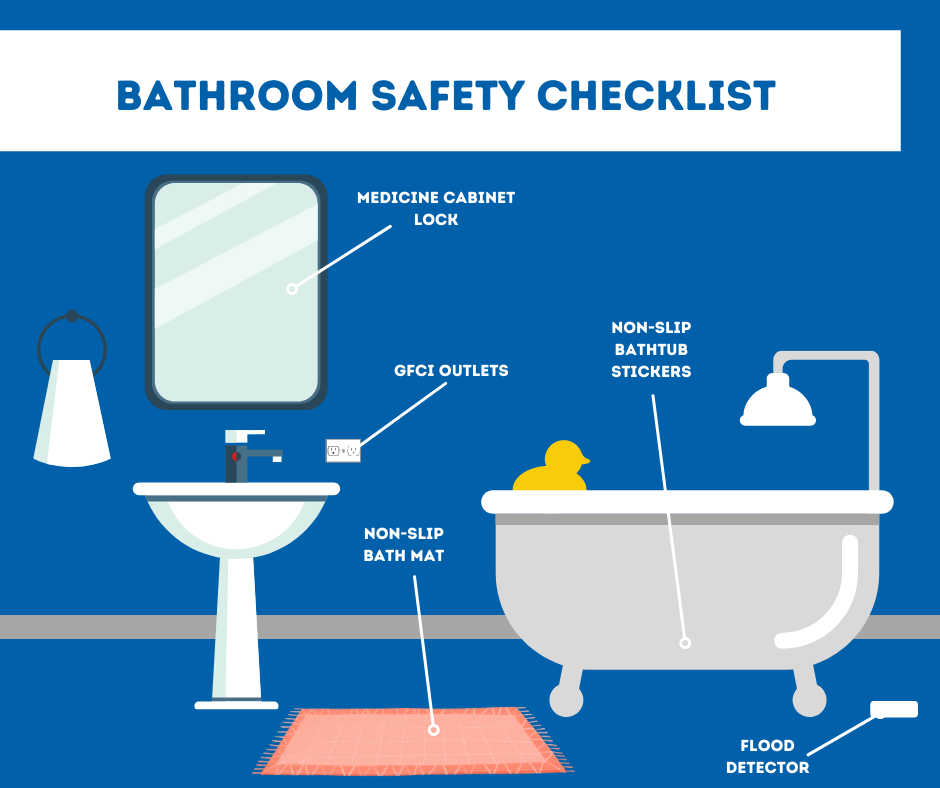
Bathroom Safety Checklist For New Orleans
Just because you don’t a bunch of square footage in your bathroom doesn’t mean that there aren’t safety issues. From water problems to electric safety, here are some safety tips for your bathroom:
-
Flood Sensors: A leaking sink or tub can lead to an expensive amount of water damage. Get alerted early about pooling water with a flood detector before they bring about hundreds of dollars in renovations.
-
Textured Shower Mats: A slip and fall in the bathroom can be devastating, causing pulled muscles, sore joints, or broken bones. You can prevent these issues with a textured bath mat for after your bath or shower.
-
No-slip Bathtub Strips: Another water hazard, a tub can be a slick surface to be on. Make sure each bathtub has some non-slip stickers so your feet and toes have a bumpy patch to gain traction.
-
Medicine Door Lock: If you have young children or someone with memory difficulties, you have to take extra precautions regarding prescribed medicine. Secure your bottles by installing a medicine cabinet with a locking latch.
-
Circuit Interrupter Outlet: Just like the kitchen, you should also put in a surge protecting GFCI outlet on every bathroom receptacle. These will stop the flow of the electricity if water splashes on them or there’s a sudden spike from a hair dryer or curling iron.
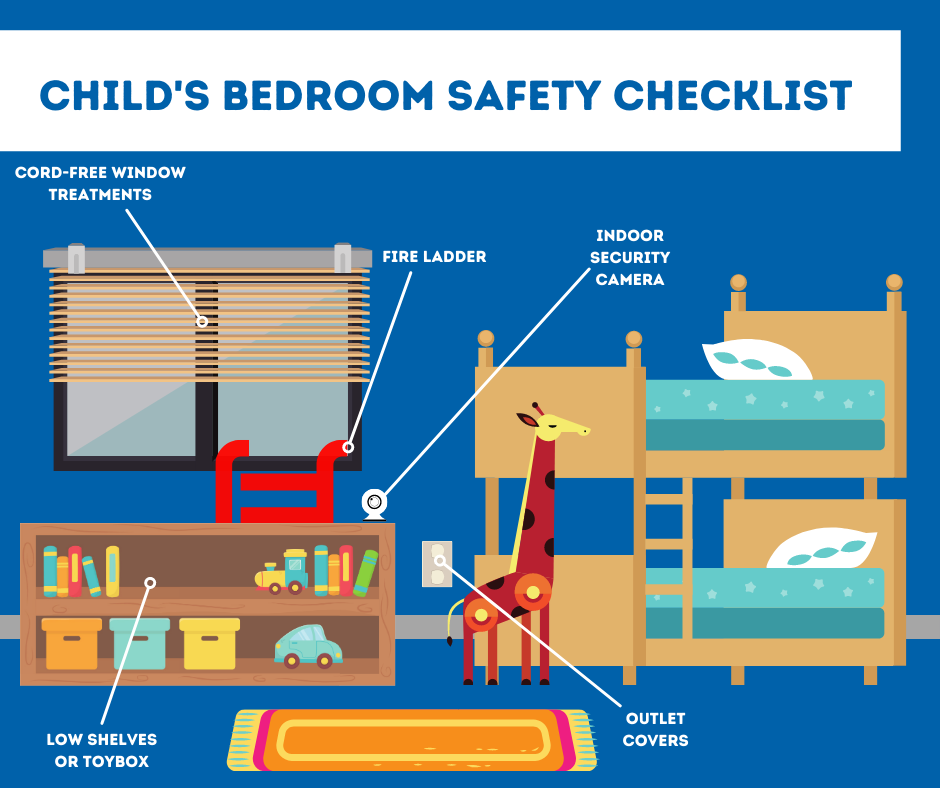
Children’s Bedroom Safety Checklist For New Orleans
Your child’s bedroom should pair safety with accessibility. If their window treatments or other things are safe but hard to operate, then your kids may get around the device with risky activities -- like shimmying up a bookshelf -- to open them. Here are some straightforward, yet safe, ideas:
-
Cord-Free Window Treatments: Safety agencies have long called window treatment cords a secret hazard for children and animals. Put in motorized blinds or shades that kids can easily control via remote control. Or even better, pair your shades to your ADT smart hub so they open without anyone’s help when it’s time to get up, and go down in the evening for added darkness.
-
Indoor Security Camera: A camera sitting on your kid’s dresser can act like a baby monitor that you can watch from a mobile device. And when they want something, they can hit the 2-way talk feature included on the camera.
-
Outlet Plug Covers: While every outlet should have covers on them to protect your small children, this is especially needed in their bedroom. It’s the one room in your home where your child will most likely play solo without consistent additional supervision.
-
Window Escape Ladder: If you use bedrooms on the second floor, then you will want to install a window escape ladder. These should let your children escape even if the stairway or lower levels are on fire. Make sure to go over how to unfurl the ladder a few times a year.
-
Toy Chest Or Low Bookshelves: It’s interesting to view a toy chest as a safety component, but you’ll get it if you’ve ever stepped on an action figure in your stocking feet. A clutter-free floor means a quick retreat when there’s a safety or security event.
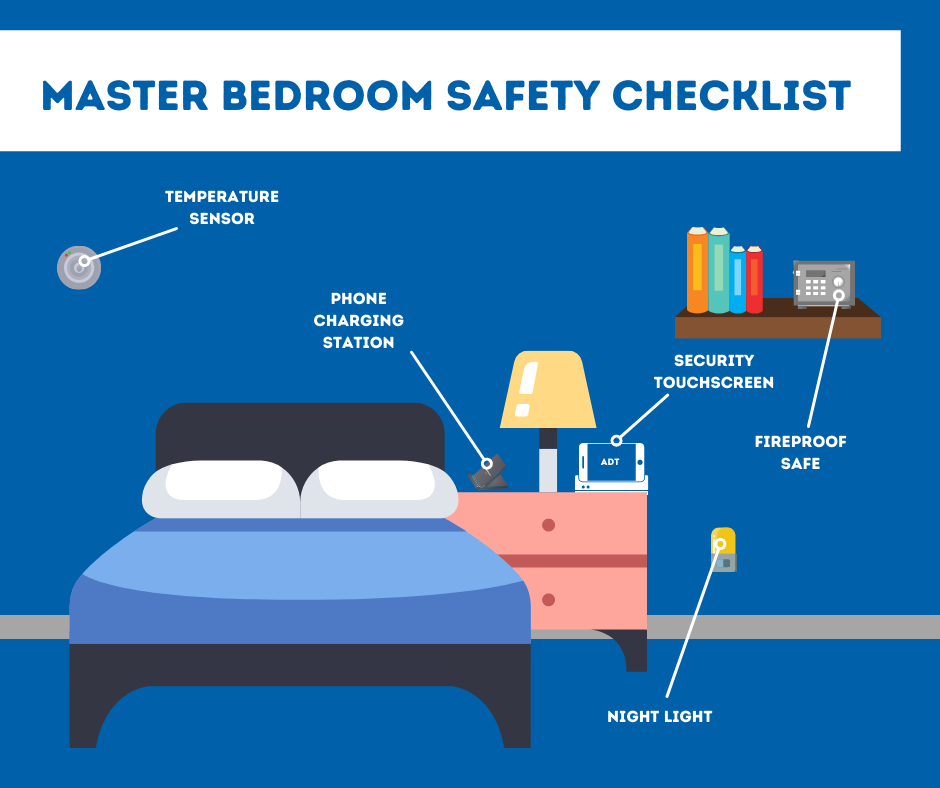
Master Bedroom Safety Checklist For New Orleans
Your master bedroom should be your calm space, so let your safety components make you more responsive if there's an emergency event. After all, being jerked awake by a loud buzzer can be confusing.
-
Security System Touchscreen: Having a smart hub on your dresser gives you a sense of what’s what that noise was without jumping out of bed. You could alternatively log into your ADT phone app. However, the HD touchscreen can be better to use when you’re coming out of sleep and confused.
-
Phone Charging Stand: We rely on our phones for so much now GPS, news readers, social media, and maybe even phones. The only problem is that an uncharged device will cut us off from communications if during an emergency. So, a an easy-to-use charging station becomes an essential.
-
Smart Lights Or Nightlights: A small light helps ground you when you’re jolted awake from a siren or other sounds. If you have trouble falling asleep with a small nightlight, install smart bulbs in your bedroom and hall. Then you can have light simply with a button push or voice direction.
-
Fireproof Safe: Stash your important documents like insurance cards, medical information, or a spare checkbook in a fireproof safe. This can be a bigger one that sits in a corner or a smaller portable lockbox that you can grab on your way out during a fire or other emergency.
-
Temperature Sensor: The drawback with most bedrooms is that they tend to feel too hot or be cold since they sit across the house from the thermostat. A temperature sensor can talk to your smart thermostat so you can have a comfortable, peaceful sleep at the perfect climate.
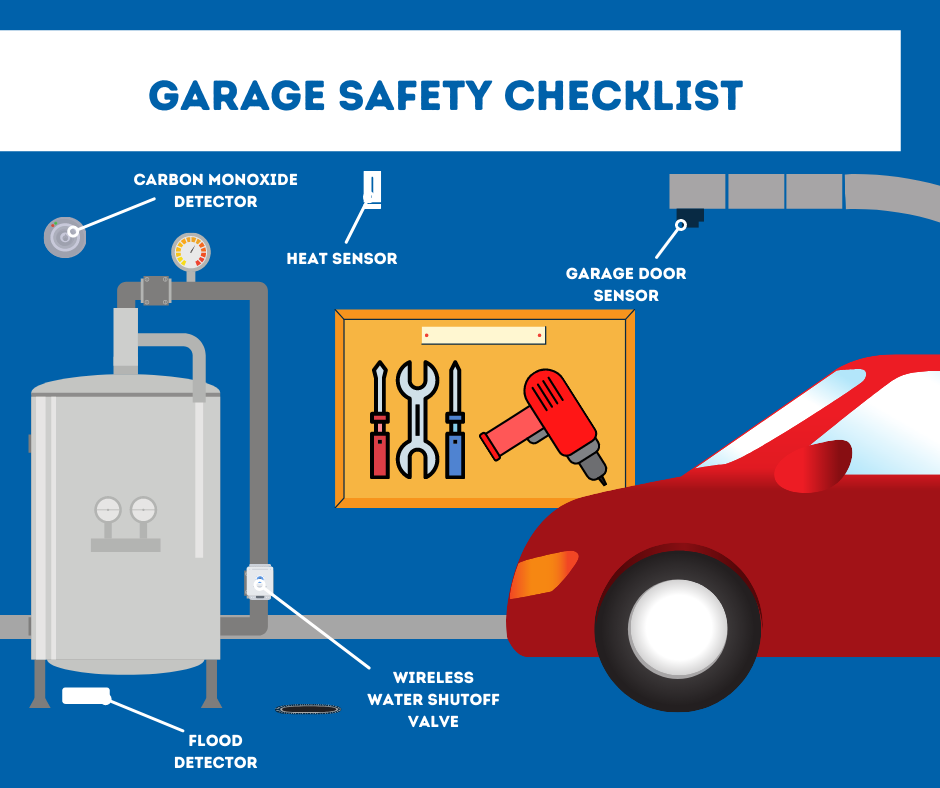
Garage/Basement Safety Checklist For New Orleans
Most safety needs in the basement or garage deal with your water or heating system. Seeing hazards early can stop more devastating problems later on. So, as you look around your basement or garage, take note of these crucial items:
-
Flood Detector Or Sump Pump Alarm: Installing a flood sensor by your water heater or sump pump can stop you from wading into a pond when you go into your garage or basement. It’s definitely better than sifting through a heap of destroyed storage boxes.
-
CO Detector: It’s nice to hang a CO alarm in areas where a natural gas leak can spring up. If you have gas heat, you should install a detector in the same place as your HVAC unit.
-
Remote Water Shutoff Valve: If your water detector senses a hot water heater leak or a broken pipe, then you need to cut off the main water line immediately. With a wireless shutoff valve, you can stop water flow from any mobile device. That’s nice when you’re visiting relatives and get an emergency leak text on your phone.
-
Garage Door Sensor: Leaving the garage door up leads to all sorts of headaches. You can lose heat through that open door, and rodents or intruders can just walk in. A sensor will notify you about an open garage door and allow you to close it remotely.
-
Heat Sensor: A heat sensor in your basement or garage is essential if you worry about freezing pipes. The heat in these areas can be drastically different than your main rooms of the house, so you may need to keep a closer eye on the temperature through your mobile app.
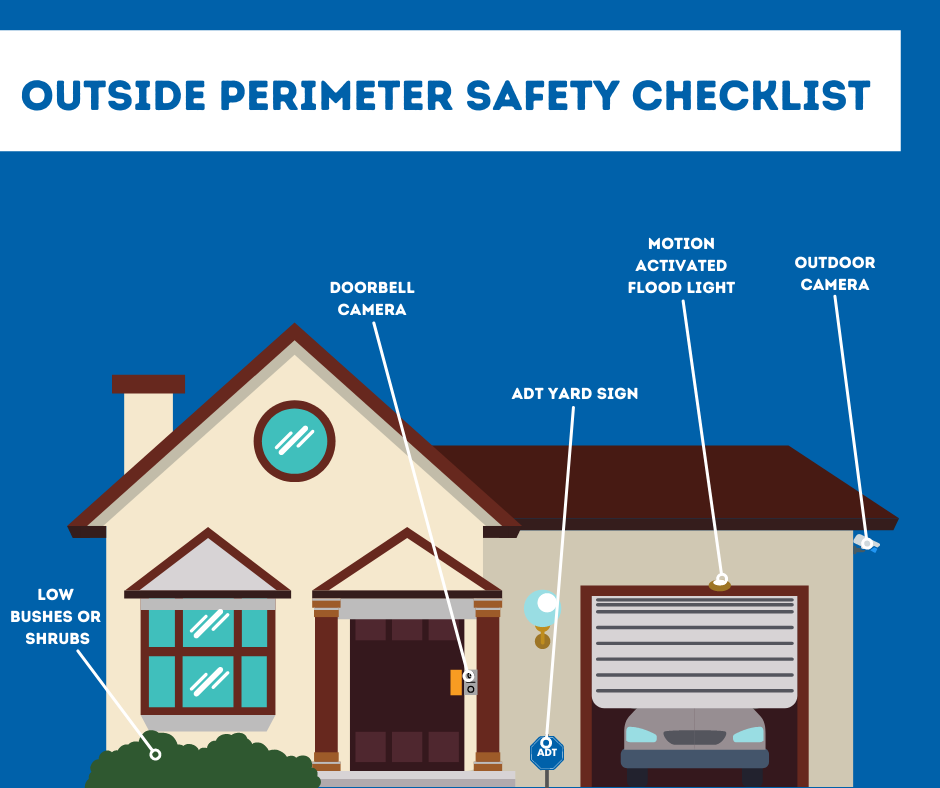
Home Perimeter Safety Checklist for New Orleans
Your foliage, driveway, and front porch are just as important to defend as the rest of your home. Try the items on this checklist to defend your perimeter:
-
Doorbell Camera: See who’s at the front door before you answer it and welcome visitors. Get a visual on deliveries and look at video clips if they are taken.
-
Outdoor Security Camera: You can install outdoor security cameras to notify you about late night movement in your back yard. These cameras are nice in areas where you may not have a window installed -- like a side yard or by the driveway.
-
Low Shrubbery: Overgrown shrubs can offer some serenity, but they also hinder your line of sight of the yard and curb. Don’t give potential thieves a place to hide. Plus, tall bushes, shrubs or foliage around your structure can obstruct gutters and bring in bugs.
-
ADT Signage: One of the most popular disincentives for a break-in is advertising to aspiring rogues that you have a monitored home security system. An ADT sign by the main walk and a window cling will show people that they should shove off to an easier target.
-
Motion Activated Outside Light Fixtures: Light is the greatest obstacle to people who lurk in the shadows. Motion-controlled lights on your deck, patio, or garage can frighten possible intruders away. Flood lights also help you work the locks when you get back home late at night.
Contact Secure24 Alarm Systems To Help You With Your Home Safety Checklist for New Orleans
While Secure24 Alarm Systems can’t deliver non-security devices on your New Orleans home safety checklist, we can bring you a state-of-the-art home security. With alarms, security cameras, and home automation, we can personalize the perfect system for your house’s needs. Just call (504) 291-4028 to get started or fill out the form below. Or customize your own solution with our Security System Designer.
